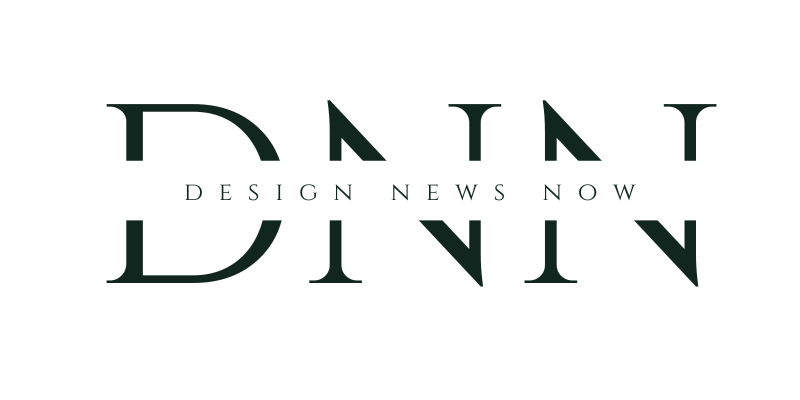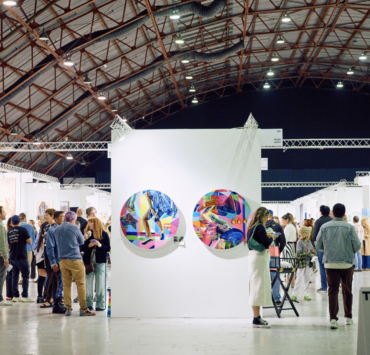Brooklyn-based design firm Almost Studio recently completed their latest project, a Loft for a Chocolatier. The historic chocolate factory was originally built in 1947 in the Bedford-Stuyvesant neighborhood of Brooklyn, along Myrtle Avenue. In starting this project, it was crucial to the team to develop a series of spaces within an otherwise open layout by playing with the scale of materials, referencing the existing palette of the industrial factory space while introducing color and texture, and creating sectional change through raised platforms. We chatted with the co-founders Anthony Gagliardi and Dorian Booth about the project, and their unorthodox uses of space as well as a forward thinking approach to materials in commercial and residential spaces.
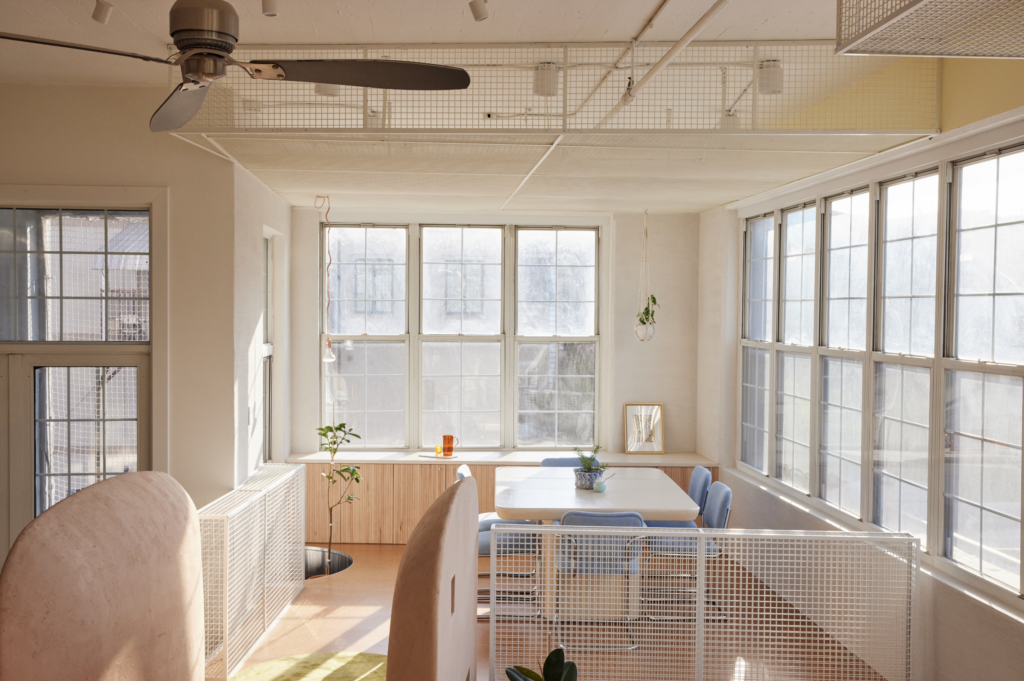
DNN: Excited to chat with you about designing a loft for a chocolatier! Tell me about some of the specific challenges and opportunities presented by working with such an iconic industrial space built in 1947? How do you navigate the challenges of adaptive reuse?
Almost Studio: When the client first approached us about the project we were immediately captivated by it – I mean it is not everyday that we get approached to design within a Chocolate Factory! Then in another fortuitous stroke of serendipity — who knew the timing of its completion would almost go hand-in-hand with the release of the new Wonka movie…
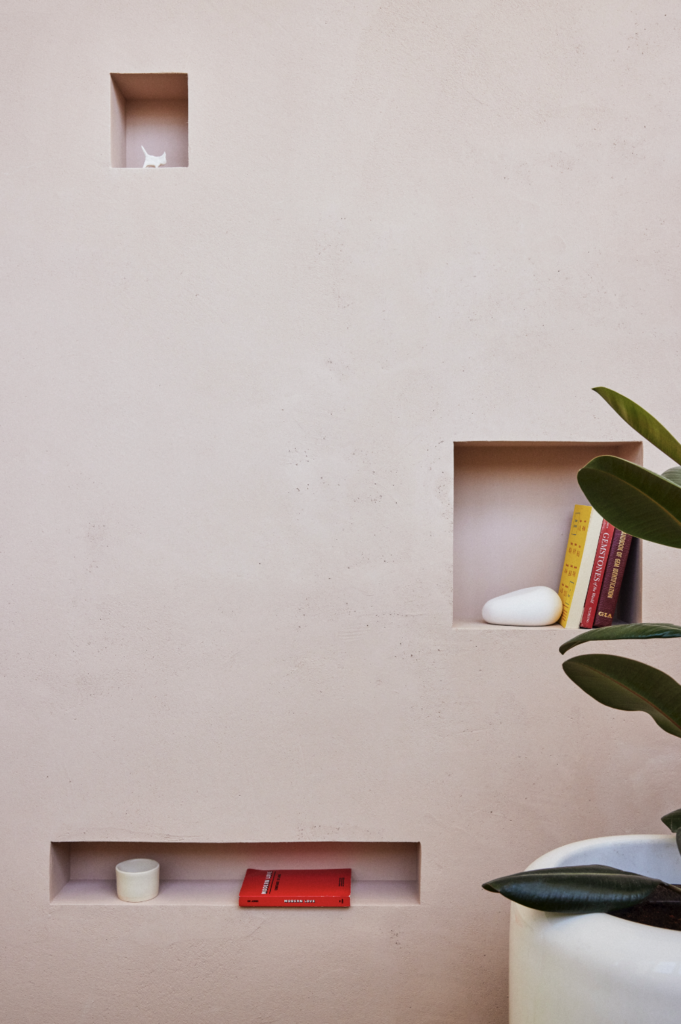
Anyway — back on topic – the unfortunate event that brought the project to life was both the challenge and the opportunity. There had been a gas leak and explosion in one of the apartments above their unit, a very short time after they had purchased their new, first home together. The explosion caused a great deal of damage to their apartment, which had to be dealt with throughout the design and construction. However, it also provided a blank canvas for the design to make a space much more tailored to the client’s specific tastes and daily life. Without the explosion there would have been no project — but because of it – the clients now have a space completely unique to them, that represents their personalities and relationship together.
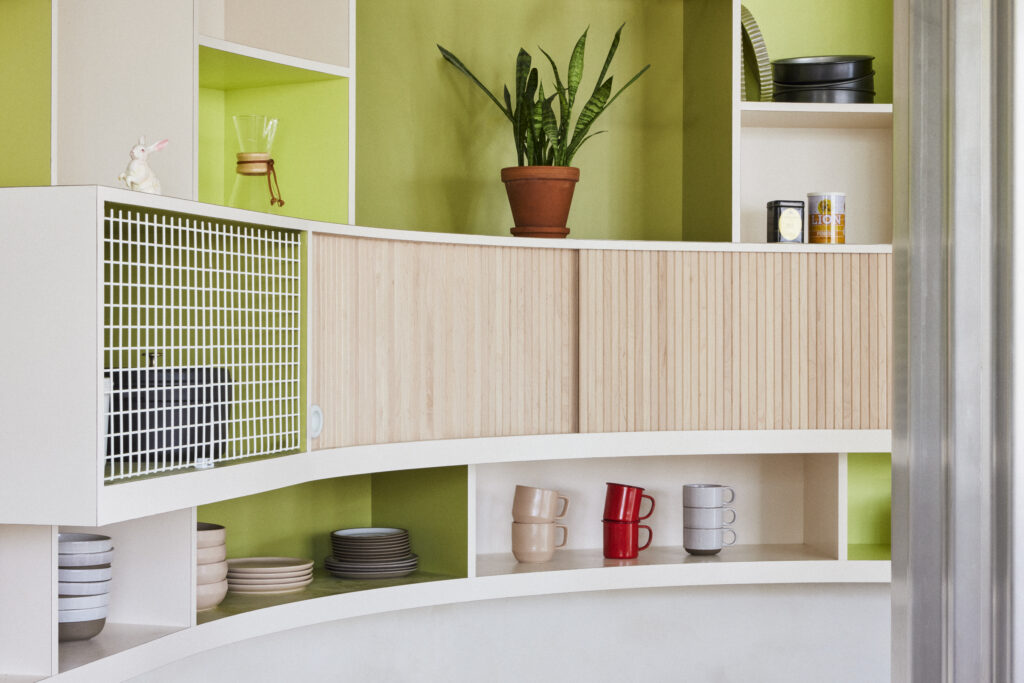
In regard to adaptive reuse, we believe all architecture is adaptive reuse, even when it is a newly-constructed, ground-up building. It goes back to our firm name and our founding principles. Almost Studio refers to the belief that when a building or a design is “completed” – it is actually only the beginning. Architecture, if done genuinely and thoughtfully, grows with an individual, couple, or a community.
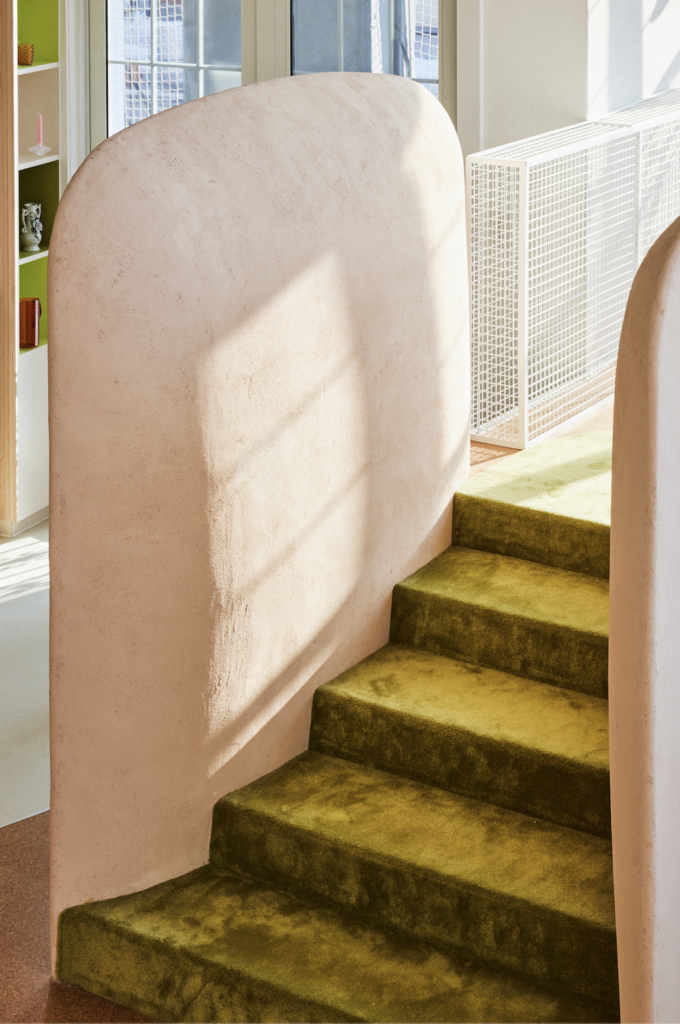
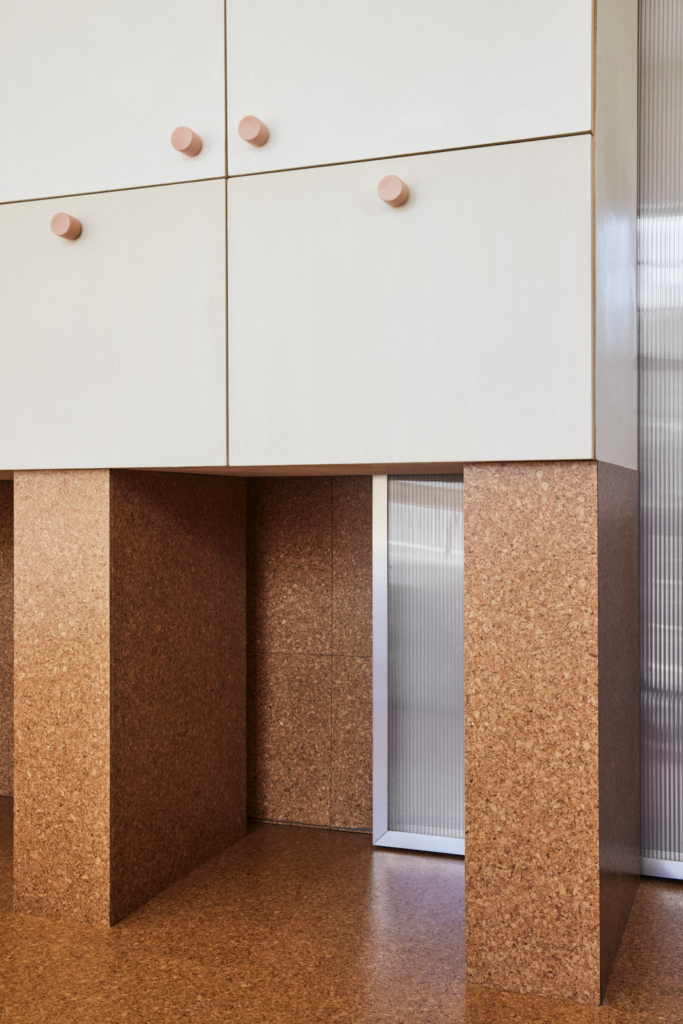
It changes with the people and the place, as the people and place change. Buildings should have longer lifespans, both for environmental and cultural purposes. If a building lasts a long time, its program will undoubtedly change over that time as social interests and needs change around it. In that sense a building is always, almost. One day it might be a chocolate factory, 75 years later it might be a couple’s first home together.
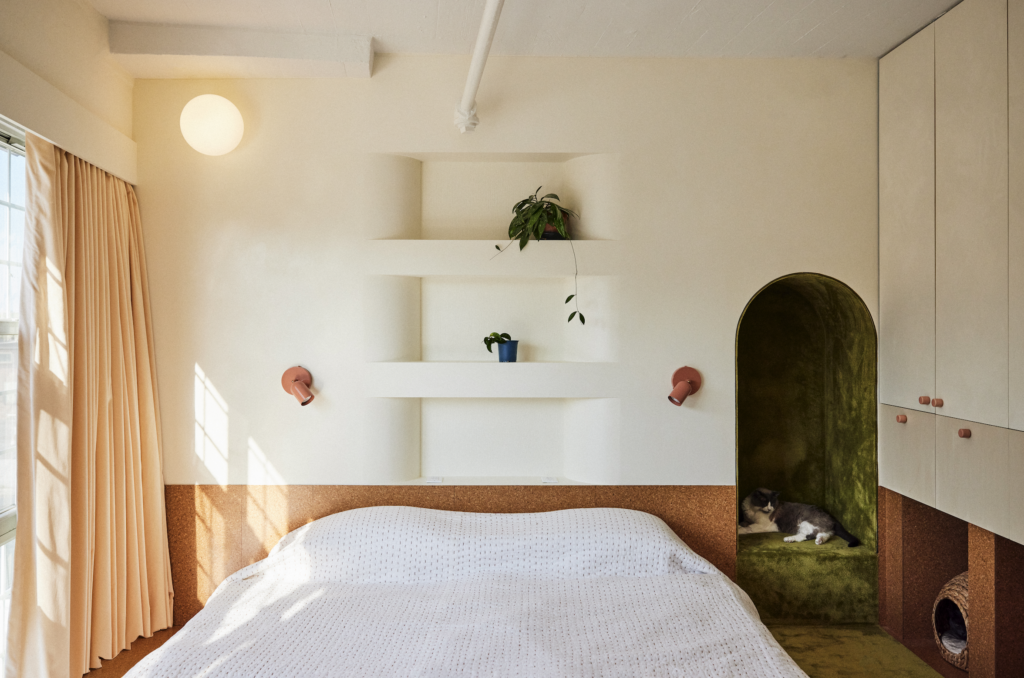
DNN: Your designs consistently provide a multi-sensory experience for the users. What role does sensory engagement play in this project?
Almost Studio: Thank you! We take that as a high compliment, and we are happy that our intentions have become legible to those seeing and experiencing the spaces. In all of our projects, we enjoy experimenting with both form and materials. We especially enjoy using materials, most often budget-friendly or standardized materials, in unconventional ways. This happens throughout the loft, but I can direct your gaze to two specific instances that we had a lot of fun with, and an additional one that was a surprise.
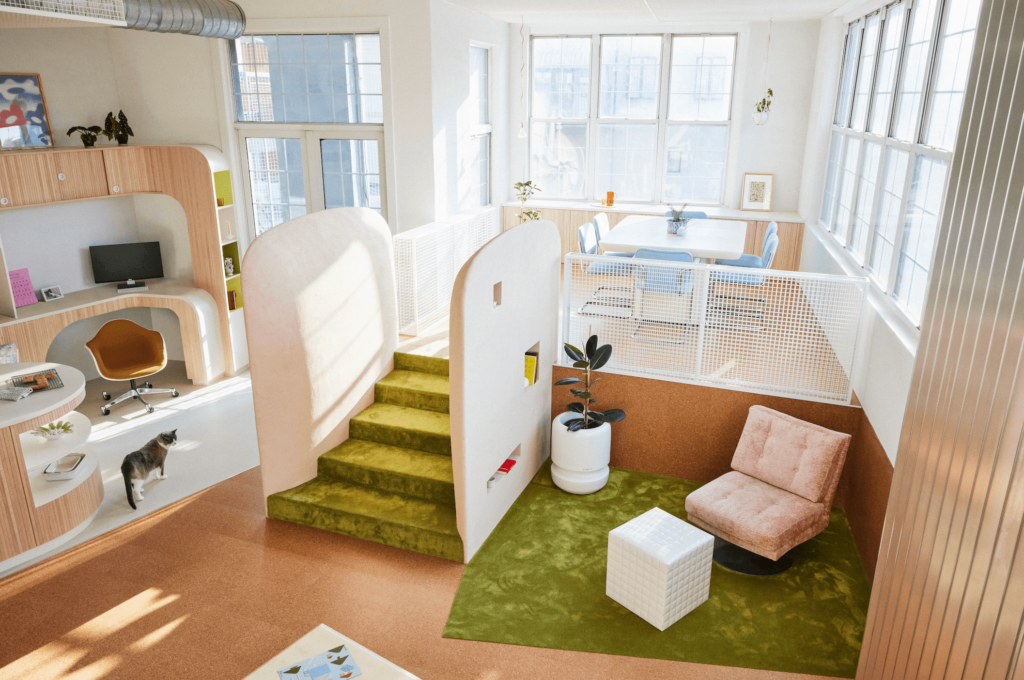
First, there are a series of green, geometric, carpet “cut-outs” from the cork flooring. The cork is meant to bring a feeling of the natural into the space, but at times can be hard, smooth, and a little reflective. As a result, the carpet “cut-outs” are precisely placed according to the clients’ daily needs. They are placed exactly where they wanted to put a chair in the living room, where they put their feet when they get out of bed in the morning, and where they sit to dress before going to work.
The inspiration for these geometric carpets is somewhere between a touch-and-feel children’s book and Matisse’s “Cut-Outs.” Second, we thought of the wall between the lofted bedroom and the living room as its own building “façade” – a house, within a house. As such, we drew inspiration from Italian palazzos, including Palazzo Strozzi, which have a distinct change of texture as one moves up the building. At the base, near the ground, the spaces are more public and take on a very rough stone texture.
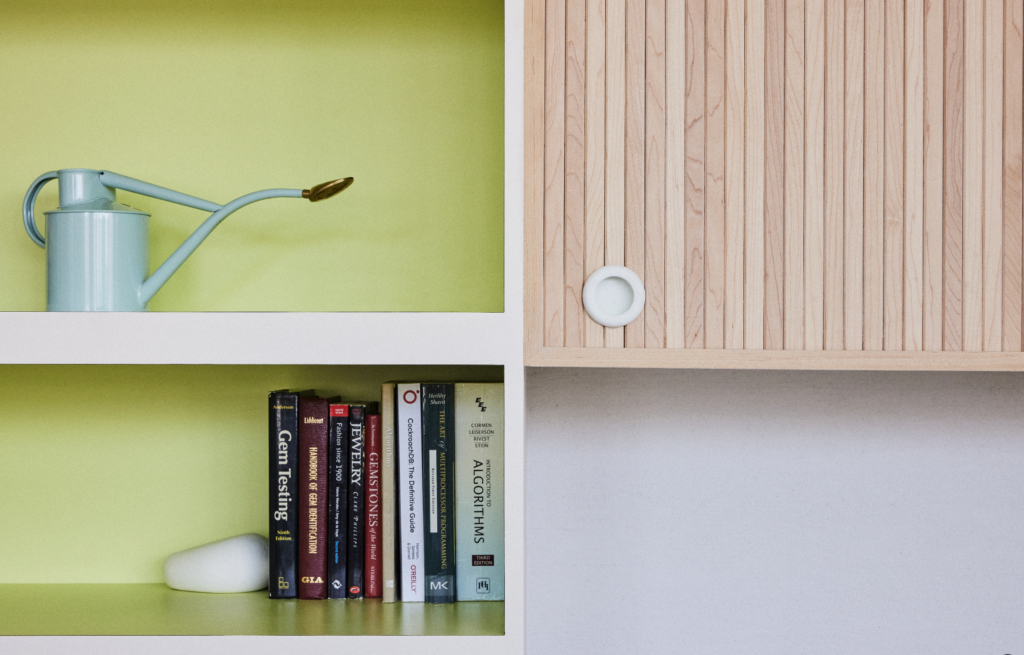
Moving up the building, to the more private spaces, the stone texture begins to smooth. Similarly, we divided the lofted-bedroom “façade” into three parts – a very rough troweled Shirasu Kabe plaster at the bottom, a smoother dapple texture in the middle, and the smoothest skim coat at the top. All this is to give the clients the experience of having their own, small private piazza – one in which you can call down your espresso order to each other from your window above.
Finally, the third and surprising engagement was that the carpeted bedroom niche, which was designed to be a place for the clients to get dressed in the morning, was taken over by their cats! We didn’t know it at the time, but this became the preferred dramatic, evening cat napping location.
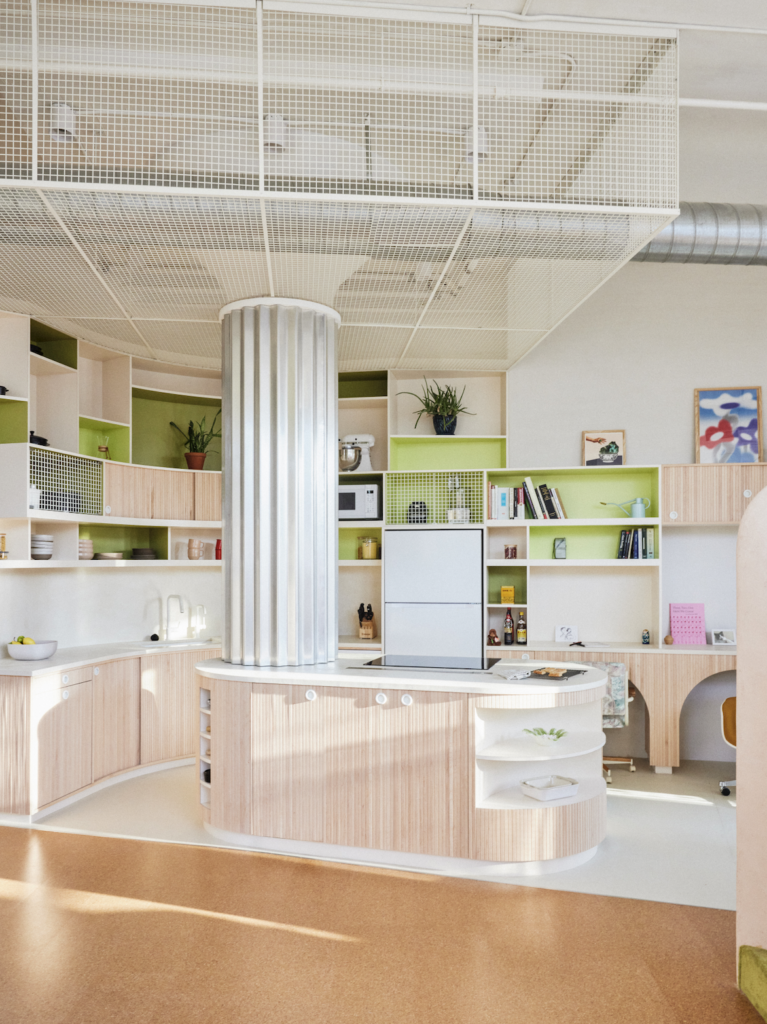
DNN: The project involved playing with the scale of materials and creating sectional changes through raised platforms. How did you approach these design decisions, and what impact did they have on the overall spatial experience within the loft?
Almost Studio: In a typical loft, there is very little differentiation between spaces. Where you eat, is also where you exercise, is also where you watch movies. Our goal was to keep the feeling of the loft – openness and continuity — while also allowing for more differentiation and specificity. We did this by exaggerating a typically underutilized characteristic of lofts – their height.
As an example, the dining area was previously on the same level as the rest of the apartment. In our design, we lifted the dining area onto a raised platform that you enter up a stair between two large, pillow-like pink walls. This did several things. It allowed the dining area to be differentiated from the living room, office and kitchen while still offering a visual connection to those spaces and across to the lofted bedroom.
The dining area also established a renewed connection to the windows and light, since the existing bottom ledge of the windows throughout the apartment is very high – almost above head height. When seated at the dining table you are closely experiencing the entirety of the window and view as the window sill is at seat height.
Finally, the raising of the dining area not only allowed for additional storage below, but also offered the unique opportunity to insert a sunken soil bed and plant a tree. Returning to the private Italian piazza, you can now have your lunch, next to a lemon tree, with sun streaming in the windows.
DNN: The project focused on referencing the existing palette of the industrial factory space while introducing color and texture. Could you provide insights into the thought process behind the selection of specific colors and textures, and how they contribute to the narrative of the space?
Almost Studio: The character of what came before is always important to us when we design. In this case, it was the industrial nature of the chocolate factory. However, whenever referencing the history of a place, it is important to do so with a critical lens and, personally for us, to not reproduce or mimic with a sense of unrestrained reverence.
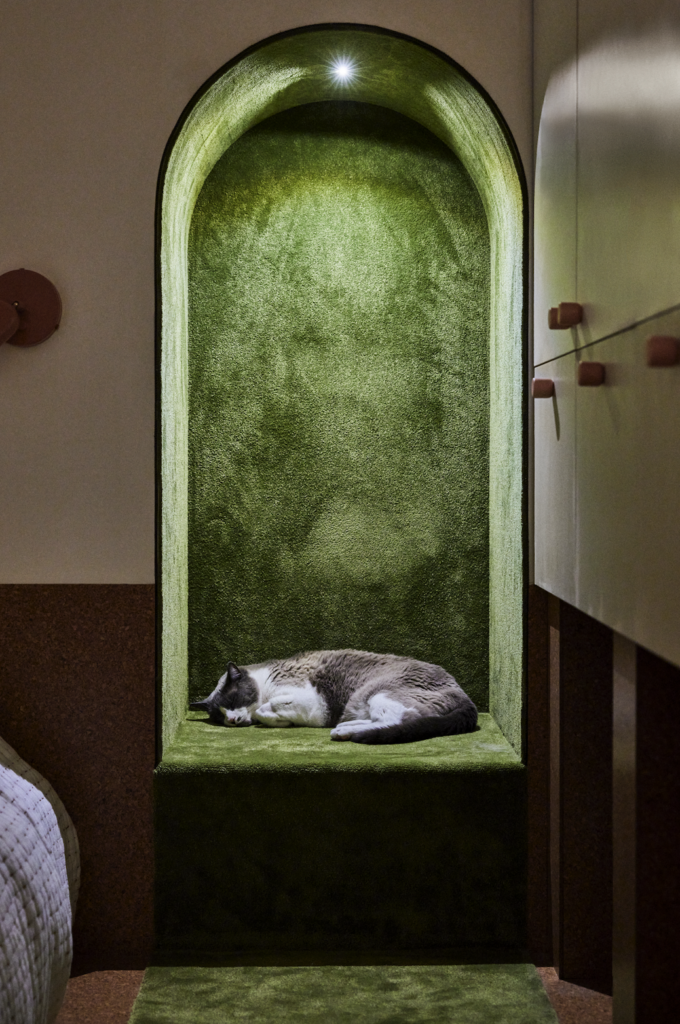
We always enjoy the act of translation and transformation when it comes to what came before. A primary example of where one might see the translated industrial character in the loft is in the columns. Previously they were standard white-painted, concrete mushroom columns typical of lofts built during this time period. In order to make the space brighter, and allow for more reflection of light, we surrounded the existing columns with corrugated metal which — mimicking the fluting of classical columns.
DNN: The project emphasizes the creation of distinct spaces within an otherwise open layout. Can you discuss the design principles employed to achieve this, and how these spatial innovations enhance the functionality and aesthetics of the loft?
Almost Studio: An area not previously discussed that might exemplify this is the kitchen. At the beginning of the design, we rotated the new walls to be slightly off-kilter from the existing walls and introduced curvature. One of the beneficial things this did for the project is it allowed for the creation of new spaces that previously didn’t exist. With the slight rotation came a slight differentiation within the larger kitchen space, now allowing for an office space in addition to the kitchen itself. The rotated and curved walls provide for a deeper desk area and extra storage drawers, while creating library shelving on the other side.
DNN: How did Almost Studio work with your chocolatier client to understand their vision and integrate it into the design of the space?
Almost Studio: The final spaces you see are directly correlated to our process – and our process is basically a reflection of who we are, and what we are interested in. Our hope is that clients come to us because they align with or share some of the same interests – and thankfully this has been our experience so far. With this loft, the clients came to us because they had seen some of our previous work, especially the Sandy Liang Flagship store in Manhattan – and were interested in collaborating together on a similar process with us.
We usually start the design with clients by looking at primarily art references. We use this as a starting place because it has enough abstraction, in which each person can read a piece of art in a different way, that it allows us to learn a lot about the clients’ interests and desires. A lot of important information that becomes critical throughout the project is revealed during this stage. Eventually, the discussions around art turn into organizational strategies, develop further into plan drawings, and eventually are the basis for the permit sets given to the builders and the city for approvals.
DNN: Sustainability is a growing concern in the design industry. Did you incorporate any sustainable practices or materials in this project? How do you approach sustainability in your designs more broadly?
Almost Studio: Sustainability to us is not its own topic. It is an aspect that is embedded in a discipline that builds things in the world. You cannot separate a building from its effect on its surroundings. Therefore, every design decision we make, and continuing throughout site visits during construction, considers the life-cycle of materials and the labor associated with their manufacture and installation. One especially important starting point for architecture, as we mentioned in an earlier response, is that buildings should be designed and built to last longer. There should be no more planned obsolescence in architecture. A nearsighted design is wasteful, and waste is a key component of the construction industry’s unresolved impact.
DNN: Looking ahead, are there specific design trends or concepts that you are excited to explore in future projects? Do you have a dream project you’d love to have realized?
Almost Studio: We are usually trying to go against trends – so we might not be the right firm to ask about that 🙂
Our goal moving forward is to have more people be able to experience our designs – in other words – we would like to contribute to more public projects. Don’t get me wrong, we absolutely love housing, and this will always be a fundamental part of our practice. However, recently we won a competition for a theater in Times Square, and we deeply enjoyed observing all the special and surprising ways that hundreds of thousands of people interacted with the project. Couples got engaged there, couples got married there, it held a Skrillex concert, and a large religious youth gathering. This variety of how a space we design might be used really excites us.
We are also currently working on a cultural center in the Catskills — specifically in Andes, NY — that has allowed us to expand our process to a larger scale. Increasing scale and public interaction is important to us. In addition to houses, exhibition design, and art installations – which we will continue to enjoy working on — we would also love to see what the result of our process is for a library, a museum, a recreation center, a fire station…
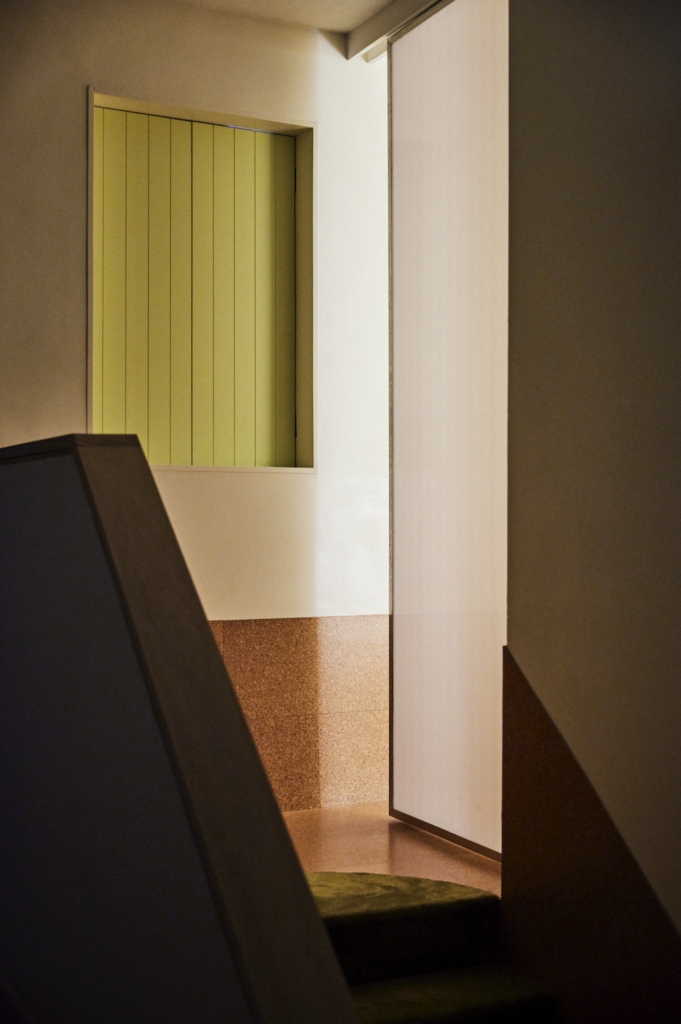
To learn more about Almost Studio, check them out on Instagram @almostudio and visit their newly designed website www.almost.studio
More about Almost Studio
Known for such projects as the Sandy Liang store in the Lower East Side and Love’s h|Edge, an installation that occupied Times Square throughout the month of February in 2023, Gagliardi and Booth gravitate towards playing with the existing conditions of a space.
Additional projects from the practice include a current collaboration on an immersive exhibition at The Shed called Sonic Sphere and exhibiton design for the foremost collection of Italian Radical Design pieces at the Museum of Fine Arts Houston.
Current and past projects include work with Yale University, Chloé, Sandy Liang, R and Company, ArtPrize, Dallas Contemporary, New York Fashion Week, a cultural center in the Catskills, and private residences in New York, California, Ohio, Maine, and France.
